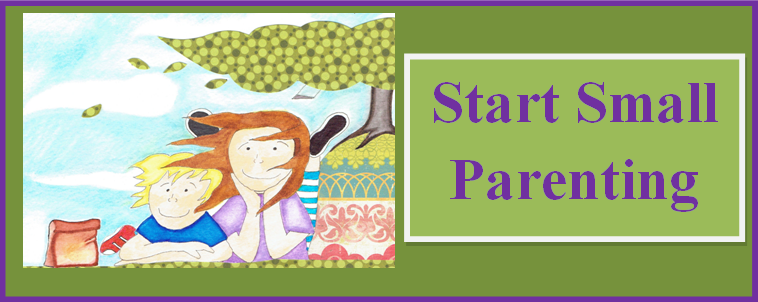
It is natural to look toward the apparent cause of disturbance or distress when some aspect of family life is out of balance. Parents often think that if they can just get their child to change, all will be calm, peaceful, joyful, easier – or any of the adjectives that parents hope for when there is chaos in the home.
The first suggestion is to look to yourself and modify what you can.
Parents who are exhausted, stressed, emotionally taxed, triggered, or unhappy will often make poor parenting choices. While those behaviors are sure to be experienced, the poor choices can be mitigated with a few powerful shifts.
The following suggestions – C.A.P.E.R. – will help to calm the SNS (Sympathetic Nervous System that is awakened when we are in fight or flight), shift the thoughts in our brain by adjusting our viewpoint, and engage the body so the changes are part of our new behaviors.
Put on your parenting C.A.P.
One way to increase one’s own emotional intelligence, especially when working with young children, is to Look to Yourself using the following steps. The first three are found within the acronym C.A.P. It’s helpful to practice some version of C.A.P. when you are working directly with your child.
- Calm Yourself
- Adjust Your View
- Pattern Interrupt
C = Calm Yourself
The first step in this task is to calm yourself before interacting with your child.
Imagine: Your child has just spilled flour all over the kitchen – counters, chairs, floor, trash can, clean dishes in the rack, and the dog. It’s a supreme mess. You might laugh if you didn’t have to be out the door with the child and the dog for a veterinary appointment. You go into hyper-ballistic drive and want to scream. The sympathetic nervous system (SNS) – or your fight/flight/freeze – has taken over.
Breathe. If you have a technique that quickly calms yourself, now is the time to use it. For many, the act of a few slow breaths will change their state. Try 5 deep breaths, each counted on your fingers. That sounds almost too simple to try. Yet it’s a powerful action.
Rapid breathing is integral to our fight or flight response. What’s the opposite of fight or flight? Relaxation and rejuvenation. Slow breathing is part of this relaxation response. Deep, slow, mindful breaths have stress-relieving, physiological effects on the nervous system. What’s happening inside the body to make that possible?
- The hypothalamus, connected to the pituitary gland in the brain, sends out neuro-hormones that inhibit stress-producing hormones and trigger a relaxation response in the body.
- The parasympathetic nervous system is affected by deep breathing. This system works in conjunction with the sympathetic nervous system, triggering the body to secrete hormones to decrease blood pressure and heart rate, inducing a relaxation response.
- The enteric nervous system also plays a role in how the body responds to stress. This complex system of neurotransmitters, neurons and proteins–located in the tissue of the esophagus, small intestine, colon and stomach–regulates digestive activity. Sometimes called the brain in the gut, the enteric nervous system sends messages between the digestive system and the brain, much like the central nervous system does with the body. The body experiences intestinal distress when faced with stressful situations due to the enteric nervous system. Deep breathing can help maintain balance in this system.
Calm Your Butterfly. Imagine a butterfly fluttering from flower to flower. Now see it land on a flower, fold its wings, and become very still. Breath deeply as you see the butterfly fly and then calm.
Calm Your Snake. Want to make this step even more powerful? Then Calm Your Snake. This is a method from Martha Beck’s book, “Diana, Herself.”* When there is a negative stimulus, we often react from memory of past traumas or imagine a devastating future. We humans are quite neurotic, anxious, and fearful. When we perceive a threat, the sympathetic nervous system (SNS) jumps in with the “fight or flight” response. Sometimes this presents as an anger snap – perhaps you yell harshly in response to one of our child’s off-track behaviors or make a quick decision to punish.
In Calm Your Snake, a rattlesnake is used to represent the survival part of our brain. Imagine a rattlesnake peacefully coiled up, taking a nap (in your belly, your heart, or wherever won’t creep you out). At the first inkling of anxiousness, stress, threat, or negativity, the rattler’s tail begins to shake. You hear the smallest rattling sound. Left unattended, the stress or anxiety sensation mounts, the rattle gets louder, and the snake (your SNS) rears up, ready to strike. You can probably remember times when you did strike out – maybe with harsh words and anger – or even physically.
Instead, at the first awareness of the rattle shaking, take slow breaths. Imagine the snake resettling into its relaxed position in a curled pile, even going back to sleep.
When I was younger, I danced professionally. I loved to perform, yet the night before a concert, I would toss and turn. What would start out as one anxious thought would escalate into negative mind chatter and destructive “What ifs..?” I wish I had this tool at that time. I use this now when I feel the smallest irritation or when my heart pounds at the thought of a big risk. Calming that snake even helps me sleep at night.
A = Adjust Your View
The more information and understanding you have regarding your child’s behavior, the more empathy and understanding you will have. This is an essential component of remaining calm and present for your child. It can be very helpful to know a behavior is normal – and temporary. This development stage will not last forever. This, too, shall pass.
Ask yourself, is there a different perspective I can have? What’s a different window I can look in to gain a more clear understanding of my child’s behavior?
For example, when your child has a frustrating, off-track behavior, you can think of that as a good problem. The child is not in trouble. He is showing you what he needs to earn.
Use these different windows to adjust your view.
P = Pattern Interrupt Yourself
A pattern Interrupt is a way to change a person’s state or strategy. This is especially helpful when feeling an anger snap or some other emotion that may affect your reaction to your child’s behavior. The key is that it involves moving the body in some way.
- Parent Time Out – this is one way to do a pattern interrupt. Sometimes, before you can react in a kind and positive way, you need a timeout. You can say, “I feel angry. I love you too much to take it out on you. I’ll be back in 5 minutes.” Briefly remove yourself to the bathroom – or stick your head in the refrigerator. That will surely change your state.

- Find a repeatable pattern interrupt you can agree to when you have a big emotional reaction. Tell those around you and enlist their help. Practice your special pattern interrupt when you are not angry or not having a big emotional reaction. Here are a few examples:
- This is a Chinese acupressure point located where the “V” of the thumb and first finger meet on the top of the hand. Pressing this relaxes me. It has been my go-to pattern interrupt for years.
- Head tap while repeating, “You are safe and loved.” This is my husband’s. He asks me to do this when he has an anger snap or feels like withdrawing from a conflict.
- Snap a rubber band on your wrist.
- Introduce something random, for no reason like, “Do you want a banana?”
- Make an “O” – but not quite – with the thumb and first finger. Concentrate as hard as you can on making the connection, but don’t actually touch the fingers together.
- Splash water on your face.
- Sing or play your favorite song.
- Jump up and down.
- Walk around.
- Pet your dog.
E.R.
The last two letters in C.A.P.E.R. utilize ideas for when you are not with your child.
E = ESR Yourself
“I find myself big enough to contain my emotions,
and know that I am larger than they are.”
– Affirmation, A Journey into Wholeness
Emotional Intelligence (EQ) is the ability to recognize, understand, and manage one’s own emotions. This can be done through increased Emotional Self-Regulation (ESR). This is about being conscious of and able to control one’s emotions and responses to situations and other people. This includes our ability to manage change and stressful situations. It involves conscious and unconscious influences on our emotions and how we experience and express those influences.
When someone cuts us off on the freeway, ESR is what keeps us from slamming into the car of the other driver. When someone cuts in line at the checkout stand, we usually don’t punch them in the face. ESR is the ability to refrain from saying, “Someone smells bad,” in a crowded elevator.
One element of ESR is having emotional awareness, which helps build emotional resilience – both key to strong EQ. This includes finding creative solutions to problems, bouncing back from emotional hurts, coping with adversity or not getting one’s way, and healthy relationships and group interaction.
The operative word in feelings is “feel.” We feel these feelings in our body. While it is a process of thought and logic to name our feelings, it is important to be in touch with what is happening on the inside of our bodies.
One of the best reasons to work on your ESR is that you are a model for your child. If you are in a calm emotional state you will be more effective at communication. Our children are like photocopy scanners. They often replicate our emotional state. Your awareness and self-regulate will help your child with this.
An ESR Parent Practice
Bring more awareness to your feeling and actions. Try this:
- List the things that cause an impulsive emotional reaction for you. This could be triggers that make you lose it or circumstances that cause anxiety, fear, or anger. Write: ‘I get really angry when…’. Or “_____scares me.”
- Write down a strategy for each of these that you can use to prevent losing your self-control in future, for example, ‘When I realize I’m angry I can stop, breathe deeply, take a short walk, and then return’.
Embody Emotions
Parents who have high emotional resilience will find themselves more resilient when working with their child’s big emotions. Part of this is their ability to identify and understand their emotions.
- Know your emotions.
- Body: When you have a moment, conjure up the last big emotion you had. Sit with that feeling and notice where it lives. Does anger reside in your stomach? Fear in your throat?
- Color: Is there a color to the emotion and does it change as you observe it?
- Rating: Rate it from 1 – 10, with 10 being the most intense aspect of the emotion. Watch the emotion and imagine the rating moving toward 1.
- Gift: Is there a gift or lesson that this emotion can give you? Ask it questions. There might be some great information there for the next time you have that emotion.
R = Recharge Yourself
A parent who is low on resources is not at their optimum for making good parenting choices. Many times the lack of sleep is inevitable. Other times, more attention and focus could be put on helping the main parent recharge their resources. Here are a few ideas:
- Partner or friend takes the child every Saturday until noon. This can help as the week draws to a close and the main parent feels exhaustion creeping in. This acts as a light at the end of the tunnel and can give a psychological boost to make it to Saturday.
- Lay down when the child does.
- Have a partner or friend cook dinner while you rest.
- Sanity Fund. If you throw some dollars into the pot each week, by the end of the month you’ll have enough to get started. With even a small amount of saved dollars you can:
- Get a sitter and go on a date (or sleep in the car where it’s quiet). Even if you don’t sleep during the day (I never could), getting off your feet and thinking your own thoughts can be rejuvenating.
- Hire a neighborhood student to come do dishes and laundry once a week.
- Form a group of parents who are willing to trade off child care. Use poker chips or some form of currency that can represent time. You can also pool funds with this group and hire someone to watch several kids at one house for an afternoon away.
Recharge Through Self-Compassion
Compassion involves a sensitivity to suffering and a desire to alleviate that suffering. Compassion for others includes stepping out of one’s own shoes and into theirs with an urge to help in some way. What about when the person needing that compassion is yourself?
One important aspect of early childhood parenting is to have self-compassion and understanding for yourself. Remember that you are sleep-deprived (and busy cleaning pasta sauce off walls, monitoring tantrums, making warm compresses for ear infections, etc…) because you are a parent of child at this time in their life. Even this will not last…
Self-compassion is compassion directed inward. It’s showing yourself kindness, concern, and support.
Kristin Neff, the author of Self-Compassion, is an associate professor of educational psychology at the University of Texas-Austin. I’ve outlined her three main elements of self-compassion:
Self-kindness. There is great emphasis in our culture on being kind to others, but not so much to ourselves. A harsh inner critic may use words that we would never say to friends. By practicing self-kindness we can be supportive and understanding toward ourselves, acknowledging that she we are doing the best we can. When life circumstances are challenging or chaotic, we can remember to soothe and nurture ourself with kind self-talk. This involves acceptance and forgiveness.
Common humanity. This means recognizing that everyone makes mistakes. People fail, disappoint, and get it wrong sometimes. We might think that we are alone in this but we’re not. It’s not just “ME” having a hard time, which is really a place of self-pity. Instead, with self-compassion, we remember the shared human experience and recognize that we all suffer. This helps us to feel less isolated when in pain. Modeling this vulnerability is important for our children to see.
Mindfulness. When people do not acknowledge their pain, especially when it comes from the inner critic’s harshness, then self-compassion is difficult. Pain and negativity might be repressed or denied, sometimes with the use of distractions or substances to cope. Some people become identified with their suffering and immersed in their problems. Using mindfulness of our negative thoughts and feelings helps us from becoming “over-identified” with our problems or stuffing them away. By being present with difficulties and realizing we are not our thoughts and feelings, we can avoid getting caught up in negative responses. When we are mindful, we pause and consider how hard it is in the moment.
Developing these three components of self-compassion can diminish self-judgment and blame, help us recognize our shared experiences, and lessen our negative emotions, which will in turn make it easier to be mindful of them. And the brilliance in this approach is that it doesn’t take an extra minute of our time. It is just a repositioning of our thought process.
Build a pattern of responding to yourself with empathy and compassion, the same way you might respond to a loved one or a good friend. This loving response usually does NOT involve arguing the person out of their view of themselves or the situation. Instead, find ways to empathize, validate, and perhaps soothe yourself.
People make mistakes.
I am doing the best I can.
I will take better care of myself by getting to bed early.
This _____ is really painful. We all experience pain. We all have failures. This is part of being human. I am not alone in this.
Gentle. Gentle. Gentle.
Really?
That all sounds wonderful, you say, as you realize you haven’t showered in 3 days and your mother-in-law is headed to your incredibly messy home for dinner.
Start where you are. Maybe all you can manage right now are 3 breaths. Even this small step gives you an important message – parents matter in this equation. Their needs matter as much, if not more, than the child. This is hard to live into for many parents since the needs, especially of an infant, are so encompassing. We envision the oxygen mask on the airplane and remember that parents come first so they can attend to their children. This goes for everyday life as well. Stressed, sleep-deprived, grumpy people are more likely to make poor decisions. Take care of yourself!
Three breaths. Try it now.
Reacting to Resistance
Resistant behaviors can drive parents to act with resistance in return. And even though some parents try to hide their emotions, theirs are real as well. Any attempt to mask emotions usually fails. Our children are masters at picking up on not only our words, but tone of voice, facial expressions, body language, emotions, and concerns.
The best advice here is not to stuff emotions – adult or child. In C.A.P.E.R., the E is helping to grow the parent’s emotional resilience. Gaining new perspectives – looking in different windows of understanding and information – can help parents to calm themselves more easily. It can be very helpful to know a behavior is normal – and temporary. No developmental stage lasts forever.
Handling Stress
Some stress is helpful and it motivates us. Positive stress is called Eu-stress. Too much stress, though, can have a negative influence. This might result in health problems, recurring anxiety, or depression. If you’re feeling stressed it’s very difficult to manage your emotions effectively. Some useful things to do to manage stress include:
- Healthy drinking and eating
- Exercise frequently
- Sleep for 7 to 8 hours a night
- Breathe deeply
- Balance of work life with the rest of life
- Meditation to reduce stress and keep calm
- Make time for fun outside of work
- Laugh more often
- Spend time alone
Nina
Nina wakes up each morning excited to be with her son. She smiles, snuggles, and tickles him. What a joy to be a parent.
By 10 am, though, food is all over the kitchen and there’s a dish pile in the sink. She’s washing them when she hears a crash. Lego blocks booby trap the hall, strawberry jam smears the wall, and crumpled bed sheets need washing – which remind her that she was supposed to call her mother before breakfast. Before she turns into the playroom she makes a mental note that they are out of milk…and it’s her husband’s birthday tomorrow.
She finds her son on the floor screaming – tucked into a head-banging ball and surrounded by the remains of a favorite toy. She reaches down for him and he kicks out hard, his heel landing in her stomach. Her anger snaps as she yells, “Stop it. Get off the floor.” He lashes out again. “Why are you hitting me? You know we don’t hit in this house. I am so disappointed in you.” If she looks at his red face and angry eyes one minute longer she might get violent, so she screams, “Go to your room.”
This mother doesn’t want to make her child feel bad. She didn’t wake up with the intention of yelling, shaming, or isolating him. What happened to the earlier tickles? The joy?
When I started working with Nina, she felt overwhelmed by her child’s misbehaviors, as if each was an opportunity for parental failure. “I tell my son what he is supposed to do. Over and over. But he doesn’t listen. And then I get mad.”
Nina was willing to first work on her Emotional Intelligence (E.Q.) This refers to being aware of and in control of one’s emotions. The more emotional awareness she has, the more she builds her emotional muscle, which we’ll call Emotional Resilience. Then she can teach this to her child and help him build his emotional resilience as well.
- P. for Pattern Interrupt
The first step for Nina was to center herself, even amidst chaos. Her favorites from the list above were taking three deep breaths and a pattern interrupt of sticking her head in the refrigerator.
- E for Increasing her Emotional Self-Regulation
Nina took a few moments each night to review her day. She would remember an emotional reaction she had and practice embodying it. She was angry at her son for throwing his food at dinner. She tried to return to that feeling of anger, which had been strong at dinnertime as she cleaned up yogurt and blueberries out from the corners of her kitchen.
- The Body: Nina felt her anger in her chest like someone was stepping on it.
- Color: Nina saw the anger start out as dark maroon, then change to light red the more she watched. Finally, it turned orange and then lemon yellow.
- Rating: Nina’s anger started as a 9 in intensity and as she observed her anger, it slowly ebbed to a 3.
- Gift: Nina searched for the primary emotion under anger and found shame and fear that she might be raising a bully like her brother.
** Heads up: Anger is a secondary emotion. It’s almost always there to hide pain and hurt. It comes from somewhere. When you take the time to sit with a more intense emotion like anger, there is almost always some other more primary emotion underneath.
- R for Recharge with Self-Care
Nina realized she wouldn’t have the presence of mind to do any of that if she didn’t get to recharge in some way. For her, the luxury of a spa day or out to the movies with friends just wasn’t going to happen. She needed her recharge to meet three criteria: realistic, inexpensive, and quick.
First, she brought in 2 teenage girls to watch her son. Two afternoons a week they took him out in a stroller for naptime. Nina used the time to get dishes or laundry done. Those few hours gave her an edge on some necessary house duties, leaving her more relaxed in the time spent with her son.
Practice
A theme you will see throughout the ideas of 3R’s parenting (respectful, responsible, reliable) is allowing your child a chance to practice the new information, skills, and expectations you are teaching him. Ask your child: “Show Me.” You’ll ask your child to show you what they’ve been learning. Allow yourself the same kind of practice as you learn a new-to-me skill. Show your child what you have been learning.
|

